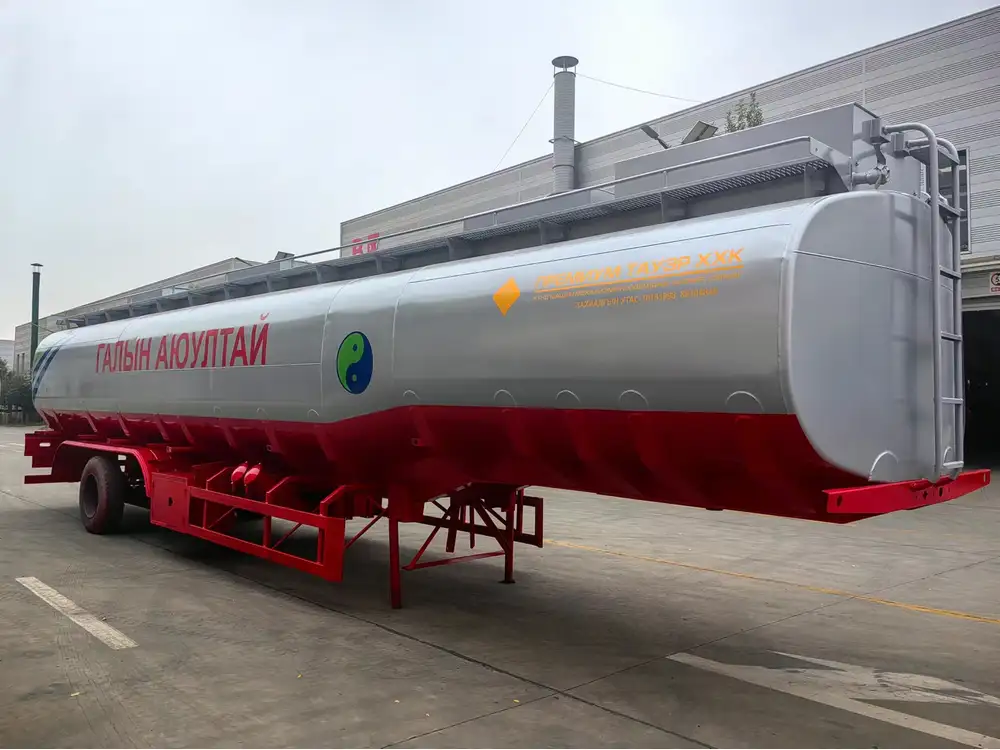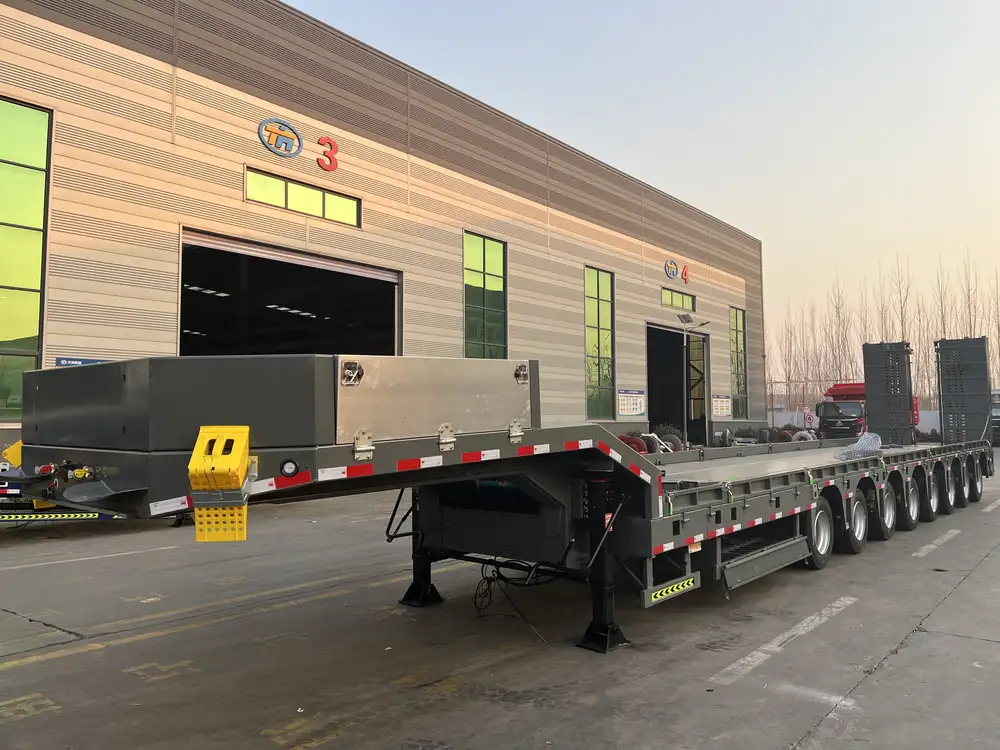When it comes to purchasing or verifying the authenticity of a flatbed trailer, one crucial piece of information you need is the Vehicle Identification Number (VIN). Understanding where to find the VIN on a flatbed trailer can save you from potential legal issues, facilitate insurance processes, and help you in maintenance tasks. This guide will meticulously examine the various locations and methods to accurately identify the VIN on a flatbed trailer.
What is a VIN, and Why is it Important?
Definition of VIN
The Vehicle Identification Number (VIN) is a unique alphanumeric code assigned to each vehicle, including trailers. Typically composed of 17 characters, the VIN serves multiple purposes:
- It acts as a fingerprint for the trailer.
- It helps in tracking recalls, registrations, and insurance coverage.
- It provides vital information about the trailer’s manufacturer, model, year, and specifications.

Importance of the VIN for Owners
As a flatbed trailer owner, the VIN is crucial for several reasons:
- Ownership Proof: The VIN ties a trailer to its legitimate owner, helping distinguish it from stolen units.
- Warranty Claims: When seeking warranty repairs, the VIN is essential for verifying the terms of coverage.
- Sales and Transfers: When selling or transferring ownership, the VIN must be documented for regulatory compliance.
- Insurance: Insurers require the VIN for accurate quotes and claims.
Common Locations of the VIN on Flatbed Trailers
Knowing where to look for the VIN can make your task much easier. Here are key locations where the VIN can typically be found:
1. Front Section of the Frame
One of the most common places to find the VIN is on the front section of the trailer’s frame. It is often located on the left side of the frame, just after the hitch. The frame offers a sturdy surface, and the VIN can be stamped or welded to ensure visibility as well as durability.

2. Near the Axles
Another prevalent location for VINs is near the trailer’s axles. Look for the VIN on the crossmember or the support structure that houses the axles. Look closely; sometimes, the VIN might be covered in grease or dirt.
3. Towed by the Trailer Hitch
Some manufacturers place the VIN on the frame next to the hitch. This ensures that the VIN is easily visible when hooking up or inspecting the trailer.
4. Inside the Trailer
In certain models, the VIN may be located on a placard affixed to the structural wall or the interior flooring of the trailer. Checking inside can help you locate VINs that may not be visible from the outside.

5. Near the Tires
Sometimes, the VIN is placed near one of the tires, specifically on the sidewall or the fender well. This is less common but still worth checking.
6. Manufacturer’s Plate
The manufacturer’s plate, often placed on the front bulkhead or somewhere accessible, usually contains critical information about the trailer, including the VIN. Check for this plate as it might have additional information related to weight ratings and compliance.
How to Read the VIN
Understanding how to interpret the characters within a VIN can provide insights into your flatbed trailer’s specifications and history. The 17-character string can be broken down as follows:
| Character Position | Information Derived |
|---|---|
| 1-3 | World Manufacturer Identifier (WMI) |
| 4-8 | Vehicle Features (Model, Type, Body) |
| 9 | Check Digit (used to prevent falsification) |
| 10 | Model Year |
| 11 | Plant Identifier (where the trailer was manufactured) |
| 12-17 | Production Sequence Number |
Each character provides critical data that can be beneficial when assessing the value of the trailer or ensuring it meets certain safety standards.

Special Considerations
Importance of Keeping the VIN Clean
As you regularly maintain your flatbed trailer, make it a point to clean the area where the VIN is located. Dirt and debris can obscure your ability to read the VIN. Using a soft cloth and some cleaning solution will help maintain visibility.
Legal Obligations
In many jurisdictions, it is a legal requirement to have the VIN displayed prominently on the trailer. Verify your local laws as failing to comply can lead to fines or the inability to register the trailer properly.

Crossverifying the VIN
When buying a used flatbed trailer, it is advisable to cross-check the VIN against official records to ensure it matches with registration documents, title, and any existing recalls.
Troubleshooting Common VIN Issues
VIN Missing or Damaged
If you discover that the VIN is missing or damaged, here are steps to follow:
- Contact the Manufacturer: The manufacturer may be able to provide assistance in determining the trailer’s original VIN.
- Consult Local Authorities: Law enforcement officers can help verify the legitimacy of the trailer and assist in determining an alternative VIN if required.
- Seek Professional Assistance: Sometimes a vehicle identification specialist can help reconstruct or validate the VIN depending on local regulations.

Fraud Prevention
Always verify that the VIN on the trailer matches the one listed on government and dealership records. Fraudulent transactions can lead to significant losses, and having accurate VIN data is essential for protection against such risks.
Conclusion: Securing Your Flatbed Trailer through VIN Awareness
Understanding where to find and how to interpret the VIN on your flatbed trailer is not just a beneficial practice, but an essential part of responsible ownership. From ensuring legal compliance to aiding in effective maintenance and insurance claims, your trailer’s VIN plays a pivotal role.
By familiarizing yourself with its common locations, the significance of each character, and legal matters related to the VIN, you not only empower yourself as a trailer owner but also safeguard your investment. Always keep the communication open with manufacturers and authorities, should any issues arise concerning your flatbed trailer’s VIN. Being proactive can prevent complications and enhance the longevity of your trailer ownership experience.
In summary, a clear understanding of the VIN’s location, reading, and management will provide you with peace of mind while ensuring you’re fully compliant with vehicle regulations, ultimately enhancing your ownership experience. For additional information or assistance, feel free to reach out to trailer experts and service providers who can offer specialized advice tailored to your needs.



